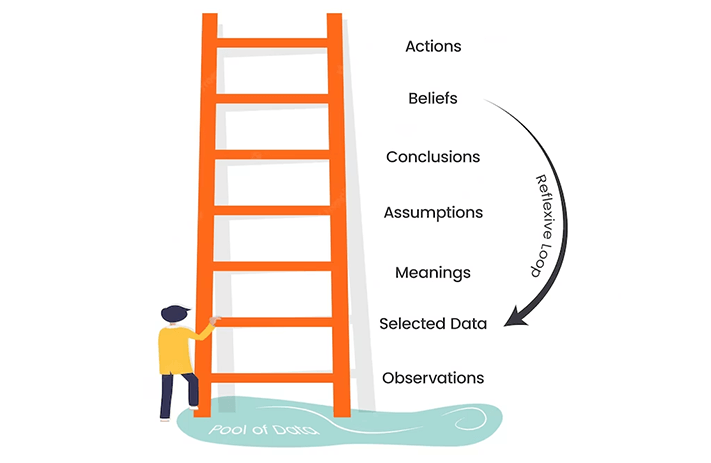
Click the button to start reading
Pro-Tips & Examples for Giving 360 Feedback to Your Peers, Subordinates and Your Boss
Nobody feels neutral about giving or receiving feedback. When the feedback request email lands in their inbox, some people feel annoyed and think, “As if I can really tell my boss how I feel about her in this ‘anonymous’ form!” Others feel relief. “Finally I have a chance to unload on my coworker who Drives. Me. Crazy.”
Regardless of our feelings, providing feedback is a matter of course in many workplaces. Whether you’re the person giving it, the person receiving it, or the manager assessing it, feedback provides a powerful tool for individual and team growth.
More and more, the 360 degree feedback method has become the preferred performance management system (PMS). This method assesses individual performance based on feedback from multiple people, including subordinates, peers, bosses, managers and sometimes even clients. Generally, the method is rolled out across an entire department. When executed properly, it can strengthen both individual work performance and team synergy. When executed poorly, however, it produces the opposite: hurt feelings, mistrust and a weakened culture.
Let’s look at some examples for giving 360 feedback to your boss and peers, and underscore how to maximize this system for optimum benefits.

The Pros & Cons of 360 Feedback
A 360 review aims to gain a full understanding of an individual’s skill set and work habits. Generally, a person receives feedback from their boss, a few people they’ve done projects with, and subordinates. It’s proven to benefit the feedback recipients, the providers of feedback, and the overall organization. But it does have its downsides as well. Let’s take a look at both sides of the coin.
The Benefits of 360 Feedback
Whereas traditionally, an individual only received feedback from his or her manager, 360 feedback allows peers, subordinates and clients to chime in as well. This comprehensive perspective picks up on work habits and characteristics not captured in exclusively downward feedback. It alerts an employee to his or her blind spots and outlines a path for career advancement. It’s also demonstrated to benefit minorities and women in the workplace more than a traditional feedback model.
The 360 PMS also benefits the person providing the feedback. It validates the perspective of every individual, regardless of their position within the organization. It allows subordinates to voice legitimate concerns they have with their boss and managers.
For management, the 360 method provides a means to build and reinforce the culture. It demonstrates to all employees the behaviors an organization values, and those it discourages. For example, a transparent culture reinforces its values by rating employees by criteria such as agreeableness and approachability. It also provides management with a breadth of feedback on individual employees, which helps to identify who to select for a promotion.
The Downsides to 360 Feedback
Of course, the 360 method isn’t perfect. It takes time and money to conduct the process proficiently. Not only does it require each employee to fill out multiple feedback forms, but collecting and synthesizing the numerous feedback forms is a lengthy process as well.
Often the feedback isn’t reliable, either. When employees feel that the method isn’t perfectly anonymous, they’ll withhold revelatory answers to open ended questions. Allowing employees to select feedback recipients introduces bias, as they’re more likely to choose the path of least resistance and avoid providing feedback on a difficult or contentious employee. Some use feedback as an opportunity to sandbag or tattle, which quickly becomes nonconstructive.
With so many clear benefits to the 360 method, it’s understandable why it’s employed. Let’s consider some strategies to avert the pitfalls and make the most of this method.

4 Pro-Tips For Giving Feedback, With Examples
Helpful feedback fosters growth and creates positive change. Here are some tips with examples for maximizing the 360 feedback method and capitalizing on its potential.
1. Be Professional
360 feedback is anonymous, but it’s not confidential. While the feedback isn’t disclosed indiscriminately, certain people are certain to read it, such as your manager or human resources employees. And the substance of the feedback you provide reflects on you.
As such, it’s prudent to keep the feedback on the up and up. It’s not a venting session or a space for unfiltered thoughts. While grievances may be valid, airing them in a feedback form may come across as petty and divisive, and it may even sound like complaining.
Professional feedback veers away from emotional language. It supports assertions with objective facts, and uses supportive language.
A statement such as “She dumped all of her personal problems on us at work and it’s been unbearable.” could be rephrased to say, “Sarah’s diverted attention at times placed undue burdens on me.”
2. Give Actionable Feedback
Feedback aims to bring about improved performance. Coaching language helps to achieve this.
Here’s an example: “While Alexa is excellent with her organization and her planning, she has a tendency to hold all of the information to herself. Perhaps if she made a continuous practice of bringing her concerns to the team, it might alleviate some stress and improve her contribution at meetings.”
3. Find Opportunities for Praise
The language in feedback builds a culture. Subtle digs foment competition, while supportive language creates openness and trust. Feedback is a window of opportunity to validate another’s contributions, and this support goes a long way.
Here’s an example of feedback that builds and supports. “I was blown away by the slideshow James built for the presentation. His contribution was integral to gaining stakeholder buy-in and for the project’s overall success.”
4. Give Holistic Feedback
When providing constructive feedback, the tried-and-true compliment sandwich is a good formula to stick to. Approaching criticism with empathy increases the likelihood that the recipient receives the feedback openly.
As an example: “Josh generally is even keeled, and his calm keeps everyone collected during busy periods. However, his moderate pace often causes us to miss significant deadlines.”
With this summary of feedback tips, let’s now turn to some things to avoid when providing feedback.

5 Feedback No-Nos
Unless you’ve got a skin of steel, receiving feedback can be a challenge. If it comes out of left field, it feels more like a dig than constructive criticism. Keeping feedback from being more harmful than helpful requires sticking to a few guidelines. Here are four things to avoid when filling out feedback forms.
1. No Sandbagging
Feedback isn’t the space to collectively target one individual with the objective to get him or her disciplined or run out of the office. Feedback reflects on the giver as much as the recipient. And participating in sandbagging demonstrates a lack of teamwork and cooperation.
Of course this is nuanced, as some individuals certainly merit criticism from time to time. And so this isn’t an admonition to gloss over an employee’s unbearable work ethic. In such a scenario, it’s advisable to contribute feedback independently from other employees, use professional and objective language, and confine feedback to actions that affected you personally.
For example, “Jerry is a headache to work with and everyone on the team thinks so” might be rewritten as, “Jerry’s frequent unexplained absences leave me unsupported and unable to perform many of my daily tasks.”
2. No Emotion
It’s easy to get worked up over a difficult co-worker. However, the better place to vent frustrations is over happy hour with a friend, and not on a feedback form. When it comes to writing feedback, steer clear of emotional language and stick to the facts.
For example, “Lisa is a mean, nasty gossip and she’s cultivated a toxic work environment,” could be rewritten as, “While Lisa is proficient and skilled at her job, she consistently demonstrated unprofessional behavior towards me and other employees that discouraged cooperation on projects.”
3. No Tattling
Feedback isn’t the window of opportunity to report on someone. If there are legitimate complaints or issues with an employee, these can be addressed either by speaking to the individual directly, or scheduling appointments with human resources.
4. No Dumping
While anonymous, feedback isn’t this isn’t an opportunity to “finally get it out” and let someone have it. Ideally, feedback won’t come out of left field. It’s healthy to address major issues in the day to day, rather than sweep things under the rug until it’s time to provide formal feedback.
5. No Uniform Responses
Human resources and managers review feedback forms, and the integrity of the responses reflects on you. Giving uniform responses across the board indicates a lack of cooperation. It also undermines the entire endeavor, as feedback is meaningless when it’s all the same.
If you don’t know the person or didn’t work with them enough to provide meaningful feedback, it’s ok to indicate this. Otherwise, tailor feedback to each individual and dedicate the time necessary to provide constructive feedback.

3 Boss Tips on Giving Feedback to Your Superiors
We all have something we’d like to change about our boss or supervisor. They micromanage, they’re too hands off, they don’t offer support, they don’t delegate; the list of issues is endless.
The dynamic of the boss relationship, however, is such that they’re not always poised to listen. They’re conditioned, rather, to be in the driver’s seat.
Taking this into consideration, let’s consider how to give feedback to a boss in such a way that it’s received and listened to.
1. Be Objective
Rather than accuse or use emotional language, stick to the facts when providing feedback to a boss. If he overworks employees, explain what that looks like. “The team consistently puts in 12 hour days during the final weeks of every project.” If the boss is too hands off, then show what the lack of communication looks like. “Jeff sat down with the team only once during the six week project.”
2. Be Empathetic
You have your perspective on your workplace, but chances are your boss’s is entirely different. Empathetic feedback that acknowledges her unique pressures and obligations is more likely to land on soft ears.
3. Provide Solutions
A boss appreciates employees with initiative. Rather than blaming or pointing fingers, feedback that provides solutions can be the ticket to solving workplace conundrums. “Poor management and lack of resources forced every single deliverable to be late” could be rephrased as, “Perhaps initiating a pull kanban workflow would allow the team to consistently meet deadlines.”
Conclusion
It’s common to have negative attitudes toward feedback, and to either dread giving it or believe that it’s ineffective.
The truth is that good feedback builds a strong culture. But providing effective feedback is a skill. It means sticking to objective language and veering away from things like sandbagging and tattling.
Everyone seeks improvement and wants to advance in their career. And feedback is one of the means to getting there.
















